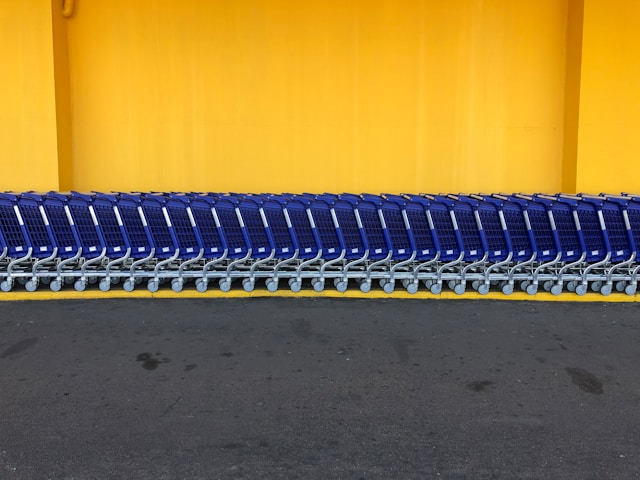Truck axle scales are essential for weighing vehicles in various commercial and industrial settings. However, like any precision instrument, specialized maintenance is imperative for maximizing uptime, safety, accuracy, and longevity throughout years of daily use. A comprehensive preventive scale maintenance program following manufacturer specifications combined with trained in-house personnel or professional scale servicing contractors enables facilities to optimize reliability and return on investment.
Benefits of Preventive Maintenance for Truck Axle Scales
Investing in consistent, scheduled truck axle scale maintenance provides multiple advantages over a reactive break-fix model, including:
- Enhanced Accuracy: Preventive upkeep sustains calibration by realigning load cells and verifying precision routinely before deviations accumulate. Consistent accuracy ensures fair transactions, legal compliance, and overall operational efficiency.
- Extended Lifespan: Proactive maintenance maximizes longevity more affordably than repairing major component failures afterward. Lubricating moving parts, testing electronics, and cleaning scale platforms minimize mechanical wear and deterioration rates.
- Reduced Downtime: Planned service scheduling allows managers to coordinate uptime-friendly access instead of unplanned scale shutdowns from unexpected failures that delay operations.
- Improved Safety: Testing overload stops and performing structural inspections proactively uncovers damage before catastrophic platform or excavation collapses. Preventive steps also improve slip resistance.
- Cost Savings: While regular maintenance requires investment, preventing catastrophic scale or electronics failures saves money over the long run. Scales also operate more efficiently in terms of energy and time through optimization.
Developing a Preventive Maintenance Program for Truck Axle Scales
The foundation for maximizing truck axle scale uptime and longevity begins with establishing a robust preventive maintenance program, including:
- Refer to the Manufacturer’s Recommendations: Reputable truck scale manufacturers provide maintenance manuals listing minimum advisable cleaning schedules, lubrication timelines, calibration frequencies, and component lifespans to comply with for warranty coverage.
- Schedule Regular Inspections: Designate biannual, quarterly, and weekly visual inspections to check for debris accumulation, foundation cracks, hydraulic leaks, cable wear, and other fixable deterioration.
- Establish a Checklist: Create a scale maintenance checklist customized to your models covering electrical, calibration, and critical structures requiring scheduled examination by qualified personnel.
- Assign Responsibilities: Clearly define whether internal maintenance teams and contracted vendors will handle which aspects of preventive upkeep based on qualifications.
- Document Maintenance Procedures: Meticulously track all preventive and corrective scale maintenance activities, including dates, technicians, parts/services, testing data, and safety incidents for transparency and analysis.
Implementing a Preventive Maintenance Plan
Here are the tips for truck axle scales maintenance plans that only succeed through rigorous implementation:
- Train Your Staff: Provide technicians with adequate troubleshooting, maintenance, and calibration training through vendors to bolster in-house capabilities safely.
- Invest in the Right Tools: Furnish staff with necessary lubricants, testing instruments, lifting equipment, and hardware for preventive upkeep outlined in checklists to enable compliance.
- Partner with Qualified Service Providers: Licensed third-party scale technicians offer supplemental upkeep, compliance inspections, and load cell expertise beyond training investments.
- Apply Status Tags: Adhere visible Green/Yellow/Red tags denoting scale inspection status to eliminate accidents on deteriorated equipment awaiting repairs.
- Maintain Spare Parts Inventory: Stock common replacement load cell modules, hydraulic components, and frequently worn deck plate sections to enable immediate corrective repairs, minimizing downtime.
Essential Preventive Maintenance Practices for Truck Axle Scales
Crucial maintenance practices contribute to your truck axle scales’ optimal performance and longevity. These should form the core of any comprehensive maintenance program:
Regular Cleaning:
Pressure wash scale platforms, foundations, and load cell pits biweekly to prevent heavy mud, snow, and debris buildup. Material accumulations retain moisture, attract pests, and enable faster corrosion. Cleaning maintains tread grip for vehicles accessing platforms. Avoid chemical cleaners on load cells or digital indicators. Target compressed air or steam jets on electronics instead.
Inspection of the Weighing Platform:
Perform weekly visual inspections across the entire truck scale structure, checking raw steel or concrete surfaces for damage. Look for cracks, bowing, chipping, or spalling in foundations, which indicate deteriorated substructures needing reinforcement before catastrophic sinkholes open up under the platform. Constant material traffic slowly degrades the reinforced concrete, and cracks will show long before collapse. Measure and log deck plate flatness over time as well to quantify sinking or deflection trends requiring shimming.
Calibration:
Calibrate truck scales through certified technicians every 3-6 months based upon weighing frequency and exposure levels to guarantee measurement reliability. Calibration examines and adjusts electronic sensor accuracy through test weights. Technicians verify conformance to local weights and measure laws regarding permissible precision deviations over time. They adjust transducer outputs or shim foundations to realign strained sensors that may have shifted gradually over months of truck traffic. Some controllers self-calibrate digitally as well. Documenting calibration history provides diagnostics revealing if scale issues localize to certain sections from substructure cracks or span between calibrations shrink, indicating exemplary mechanical integrity over the years on.
Load Cell Inspection:
- Thoroughly inspect load cells and mounting hardware every 2-4 months by opening sealed pits or removing protective covers.
- Search for visible cracks in load cell plates that indicate imminent internal sensor damage from accumulated weighing fatigue cycles.
- Inspect rubber alignment shims between cells as these compress, throwing off weight distribution over time.
- Check load cell cables at junction box connections for corrosion or loose wiring reducing signal quality that appears indistinguishable on digital indicators until disconnected entirely.
Proper load cell precautions greatly improve safety and reliability.
Pit Inspection:
For weighbridges with below-ground foundations and load cells, inspect the pits’ concrete anchor walls and base quarterly. Search for pooling water, which accelerates freeze-related expansion cracks during winter. Ensure internal pit drawers housing the load cells remain debris-free and structurally intact without foundation cracks. Lubricate mechanical sliding drawer rollers and hydraulic lift cylinders, enabling smooth operations to avoid damaging load cells or linkage rods when accessing the hardware.
Lubrication:
Apply quality penetrating oil or non-conductive grease on all truck scale pivot joints and mechanical components every 500 weighing cycles. Target saddle-slide bearing sets, hydraulic height adjusters, deck plate gaps, and mechanical stops specifically. Proper lubrication maintains free movement, avoiding seize-ups that accelerate wear or component replacements. However, avoid directly lubricating load cells or platforms to eliminate the risks of fluids damaging sensors.
Electrical Connections:
When performing other maintenance items, always inspect junction boxes, inspect cables for nicks, test grounding wires, and ensure moisture seals remain tightly intact. Loose conduit fittings, frayed power cables, or flooded junction boxes can cause entire truck-scale operations to malfunction through false signals. Technicians should check battery backup systems powering controllers and verify outputs as well during testing.
Tips for Optimizing Truck Axle Scale Performance
Supplementary best practices for bolstering truck scale optimization further include:
- Invest In Quality Covers: Install durable steel canopies over above-ground scales or waterproof polymer barriers protecting below-ground pits to shield hardware from UV radiation, icing, and precipitation.
- Train Scale Operators: Provide staff training on weighing procedures and basic maintenance awareness like debris cleanup duties and shutdown protocols for deteriorated equipment in need of immediate repairs.
- Label Overload Limits: Adhere to permanent badging denoting max vehicle weight capacities to protect scales from catastrophic overload accidents causing irreversible platform failures.
- Analyze Trends: IT systems tracking scale diagnostics over years, including calibration drift percentages and load cell failures, enable administrators to pinpoint weaknesses and validate maintenance expenditures through data.
The bottom line is that investing in structured preventive maintenance enforced through scale operator involvement, service agreements, and IT capabilities maximizes uptime, safety, and equipment lifespan for heavy-duty truck axle scales over years of cargo weighing operations.
Conclusion
A robust preventive maintenance program is crucial for ensuring truck axle scales deliver consistent uptime, precision weighing, and longevity throughout demanding daily usage across transportation, agriculture, waste management, and industrial centers. Following structured protocols directed by scale manufacturers enables facilities to maximize the return on investment from these expensive machines through sustained accuracy, damage prevention, and lifecycle extension.







